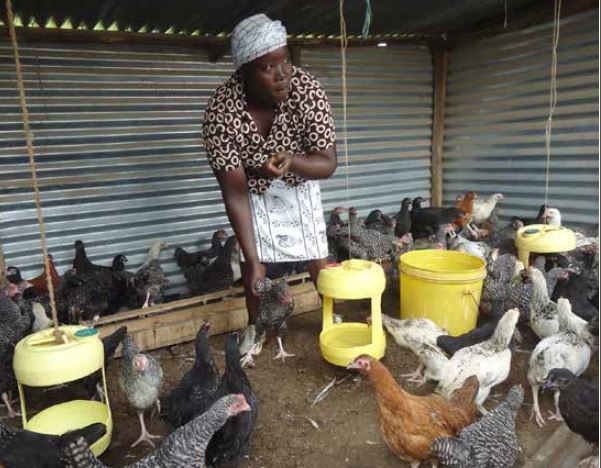Homa Bay chicken farmers have increased the number of their birds from 1,794 to 232,000 in a period of seven years leading to accumulated wealth of Sh70,572,920 last year, up from Sh6,257,850 before 2010 after adoption of incubators by farmers which has helped increase number of chicken compared to conventional way of brooding.
In this, chicken farmers in the county are earning up to Sh500 per bird up from Sh300 after forming common interest groups to market their chicken.
According to the 2018 economic survey report, the total value of chicken and eggs sold increased from Sh8.8bn in 2016 to Sh10.67bn in 2017.
A community assessment report carried out by the ministry of agriculture in the region in 2010 revealed that 2706 farmers earned an average of Sh3,148 each annually from the sale of 26,491 chickens despite their efforts to increase production due to disorganized marketing system and prevalence of diseases such as Newcastle that killed more than 50 per cent of their birds.
Through its County Service Unit for Homa bay, the Kenya Agricultural Productivity Project, for five years beginning in 2010, undertook a project in the County where it worked with other partners to address these problems. The partners included 1,700 farmers, the County Agricultural Sector Programmes Steering Committee (CASPSC) and BENAHIM consultancy, a service provider who was identified through competitive bidding.
Related content
Rare birds earn farmer Sh15million yearly
Former pilot finds millions in birds
The powder that increases bird weight by 50 per cent
Mary Mola, a farmer in Homa Bay attending to her chicken. Photo: courtesy
Mary Mola, a farmer in Homa Bay attending to her chicken. Photo: courteBENAHIM, in partnership with local farmers, engaged in activities that were aimed at increasing farmer incomes from local poultry production. These included mobilizing the 1,700 (935 males and 765 females) farmers in the 42 locations, with the help of the local chiefs. The service provider used the barazas (meetings) of the same chiefs to sensitize the farmers on the benefits of working as a group.
Out of these, 168 common interest working groups (CWGs) were formed, four in each location. The groups elected their leaders who helped BENAHIM and KAPP in organizing training meetings for farmers and reporting on the progress of each and every farmer. The farmer mobilization was done with the assistance of the Kenya National Farmers Federation (KENAFF).
The service provider, with KAPP’s support, organized farmers to form a co-operative society which focused on setting up a hatchery, establishing collection centers for birds and eggs at each sub-county level and establishing marketing infrastructure. Other interventions included improved poultry husbandry, formulation of home-made feed rations, improvement of poultry housing and diseases and pests control.
As a result of the sensitization meetings, the 168 organized into marketing groups. A total of 2,706 farmers (1487 males, 1219 females) have been enlisted as members.
All the 2,706 farmers have embraced vaccinations and good management practices as a means of disease control. This has led to low prevalence of diseases, at 44 per cent, and a 44 per cent drop in mortality rate. As a result, productivity and incomes have improved.
The price of one bird has thus improved from Sh.300 initially to an average of Sh500. This improvement has been brought about by the farmers being organized into small marketing groups and a co-operative which enabled them to have stronger bargaining power and ability to explore better markets, especially in local supermarkets and hotels. The co-operative directors have also acquired a business number from Safaricom Telephone Company to enable members’ do mobile phone banking.
They are now marketing through the co-operative; a practice which has led to better price per bird. The co-operative has acquired 300 incubators from the County government.
Marketing is being done at the co-operative level with collection centers established at each sub county level.
